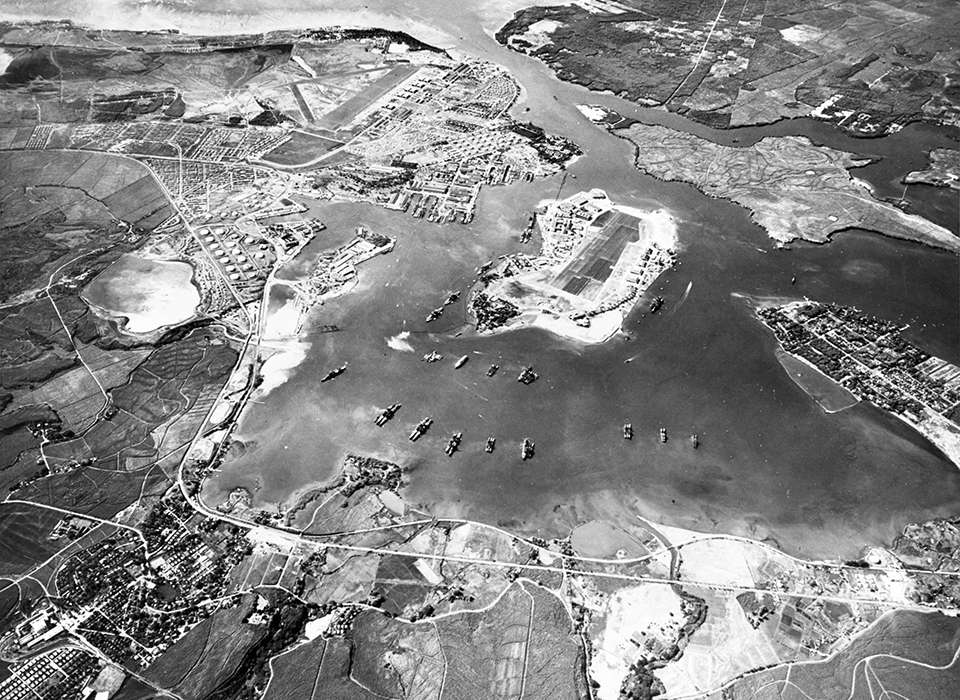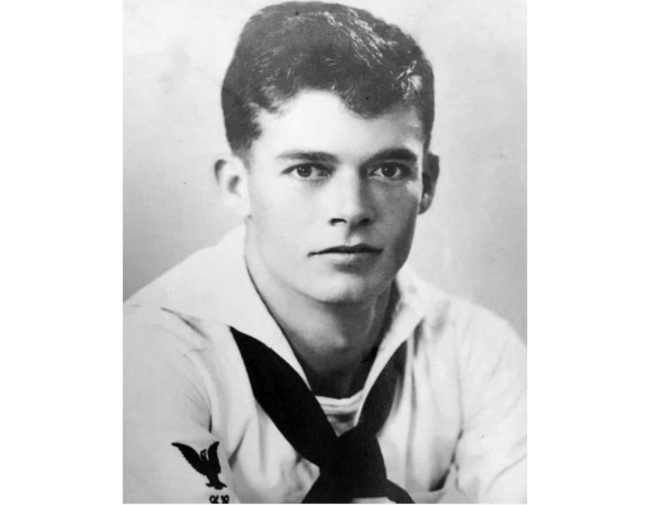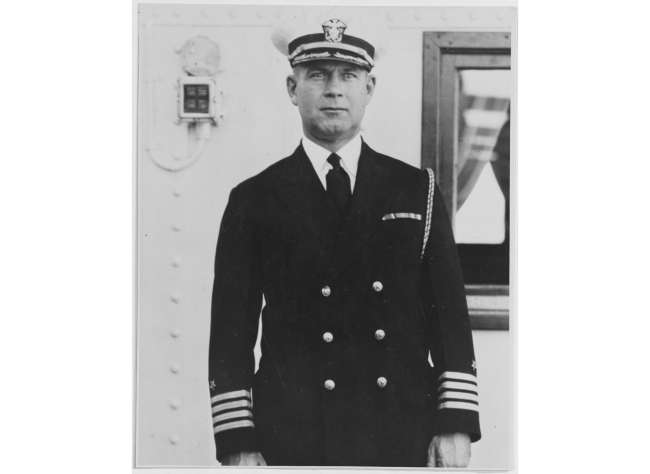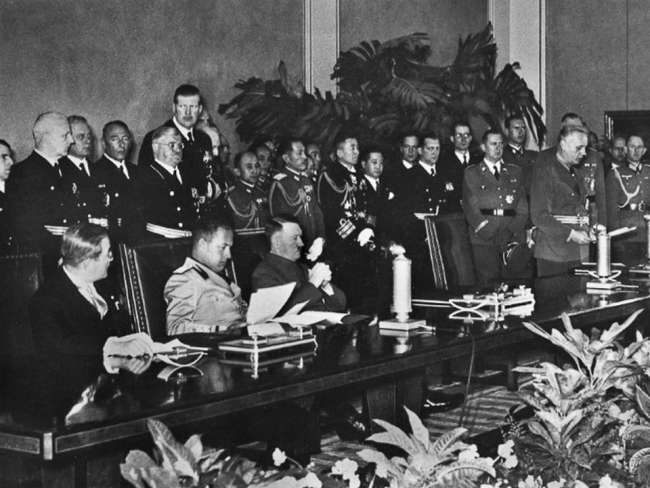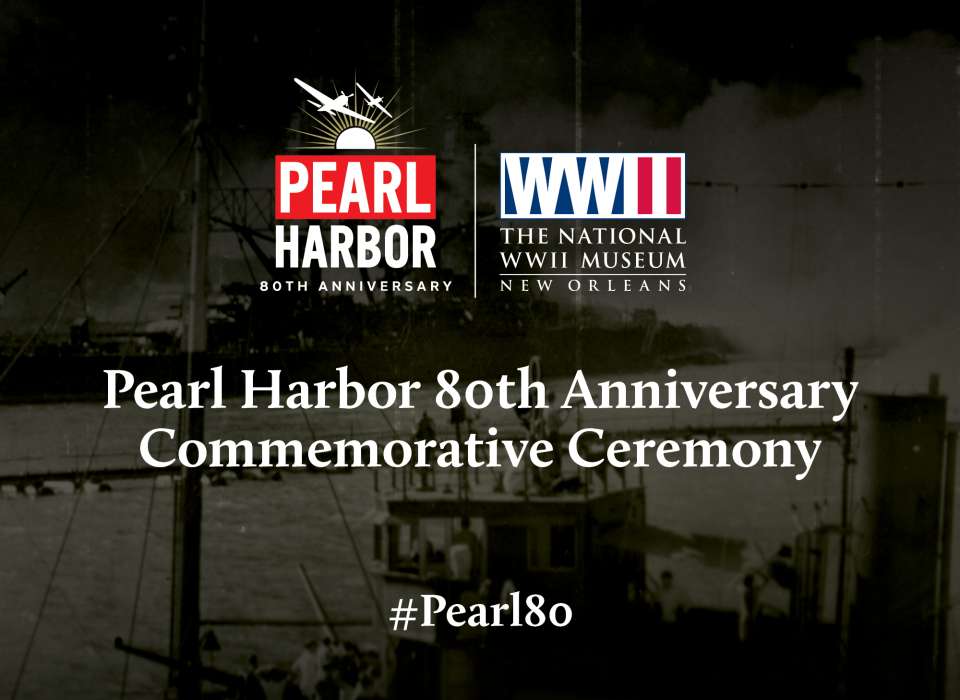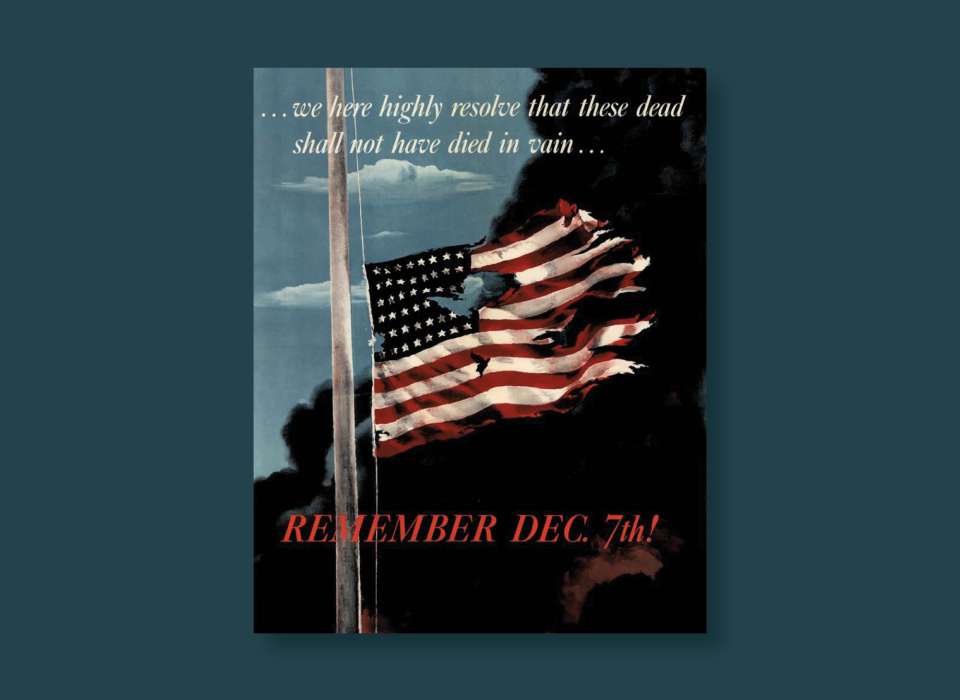Top Image: Aerial view of the Naval Operating Base, Pearl Harbor, looking southwest on October 30, 1941. Ford Island Naval Air Station is in the center, with the Pearl Harbor Navy Yard just beyond it, across the channel. The airfield in the upper left-center is the Army’s Hickam Field. Official US Navy Photograph, National Archives, 80-G-182874.
It is important to remember that not every individual who found themselves in the line of fire on the morning of December 7, 1941 was a member of the military. Many of them, like Lydia Diane Grant and her younger brother Thomas W. Gillette, were the children of service personnel stationed on the island of O'ahu.
Lydia and Thomas were born in Bath, Maine. Their parents divorced when they were both very young and their mother, also named Lydia, remarried to a US naval officer in 1937. In the spring of 1939, their step-father, then Navy Captain Claude S. Gillette, took command of the Pearl Harbor Navy Yard on O’ahu, Territory of Hawaii. Lydia and their mother moved to Hawaii with Captain Gillette at that time; Thomas joined them just over a year later in June 1940.
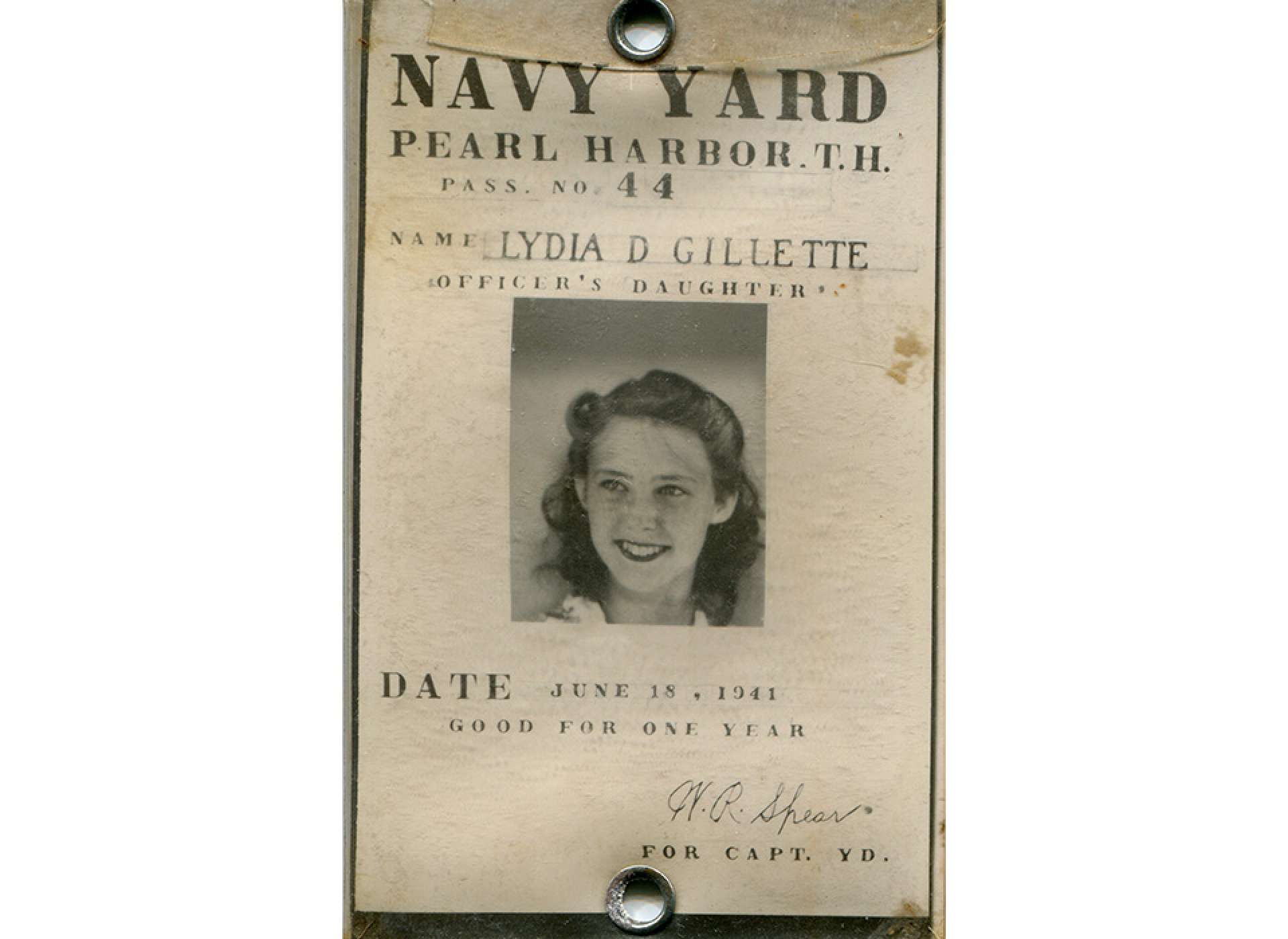
Lydia Diane Grant's Pearl Harbor Navy Yard ID. Image courtesy of Lydia Grant.
Claude S. Gillette, who would retire from the Navy after the war with the rank of Rear Admiral, graduated from the United States Naval Academy in Annapolis, Maryland with the class of 1909. By the time he took command of the Pearl Harbor Navy Yard 30 years later, many of the captains of the capital ships based at Pearl were his friends and former classmates. This came with a number of perks for Gillette’s children, including having access to the swimming pool at the Pearl Harbor submarine base, receiving invitations for field trips aboard the warships based at Pearl Harbor, and even having actress Shirley Temple attend Lydia’s 13th birthday party.
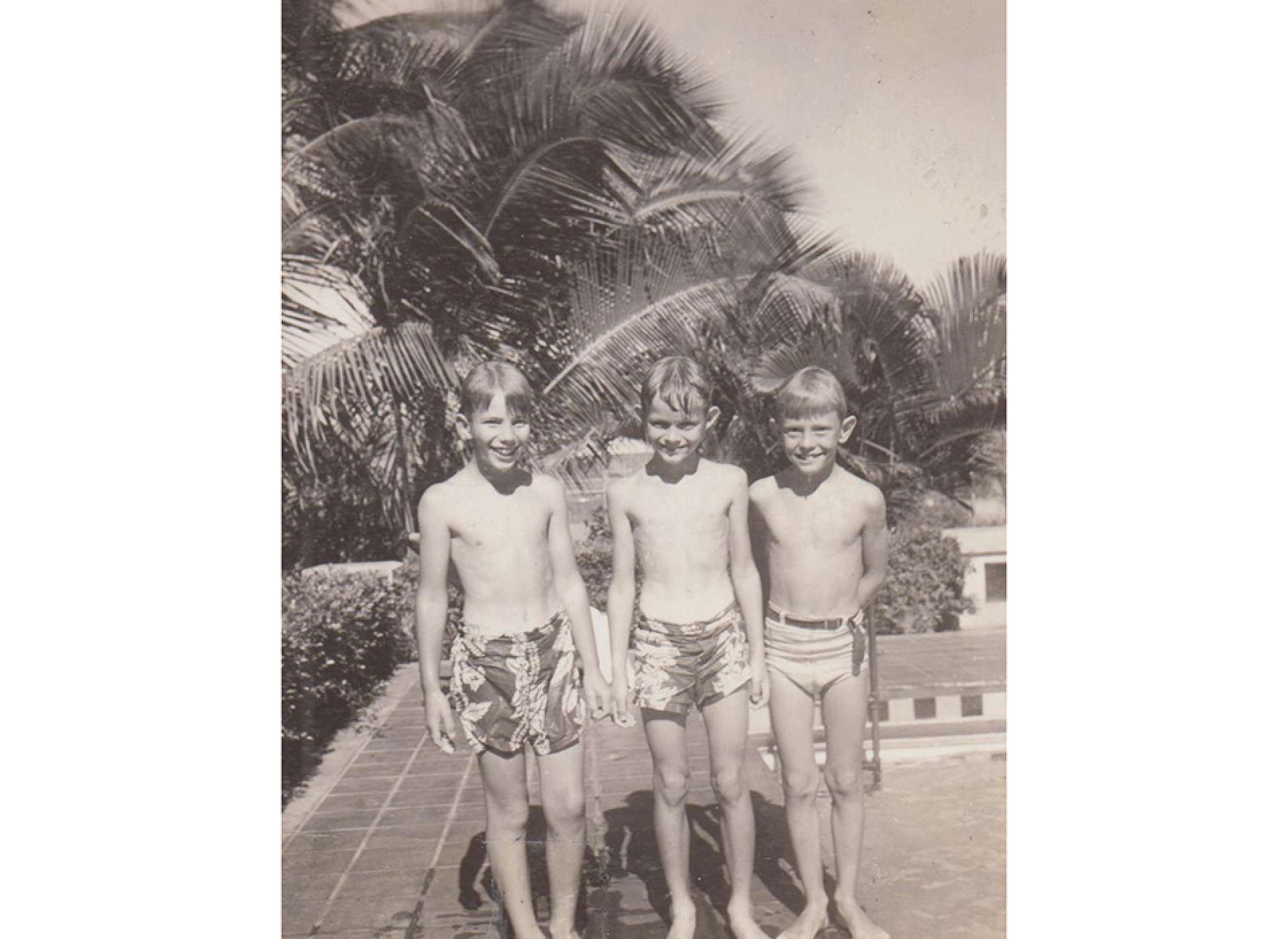
Thomas Gillette (center), Monty Higgins (on left) and a pal at the Pearl Harbor submarine base swimming pool in the summer of 1940. Image courtesy of Thomas Gillette.
One such battleship skipper who attended the Naval Academy with Claude Gillette was Captain Franklin Van Valkenburgh, the skipper of the USS Arizona (BB-39). In early November 1941, Van Valkenburgh invited Thomas and some of his friends aboard the Arizona for a tour of the ship, dinner in the captain’s cabin, and movies on the quarterdeck with the sailors serving aboard the ship. The boys spent the night aboard the Arizona then returned home the next day. Lydia received a similar invitation for herself and six friends, with the exception of spending the night aboard ship, for the afternoon of November 30, 1941.
When Van Valkenburgh got orders to take the Arizona out on maneuvers the weekend of November 30, he wrote to Lydia (who went by her middle name “Diane” at the time) asking to reschedule the visit to the afternoon of Sunday, December 7, 1941. By the time Lydia was scheduled to arrive at the ship for her visit, however, Captain Franklin Van Valkenburgh and more than 1,000 of the officers and men who served under him were dead, and the USS Arizona (BB-39) was a flaming wreck, sitting on the bottom of Pearl Harbor.
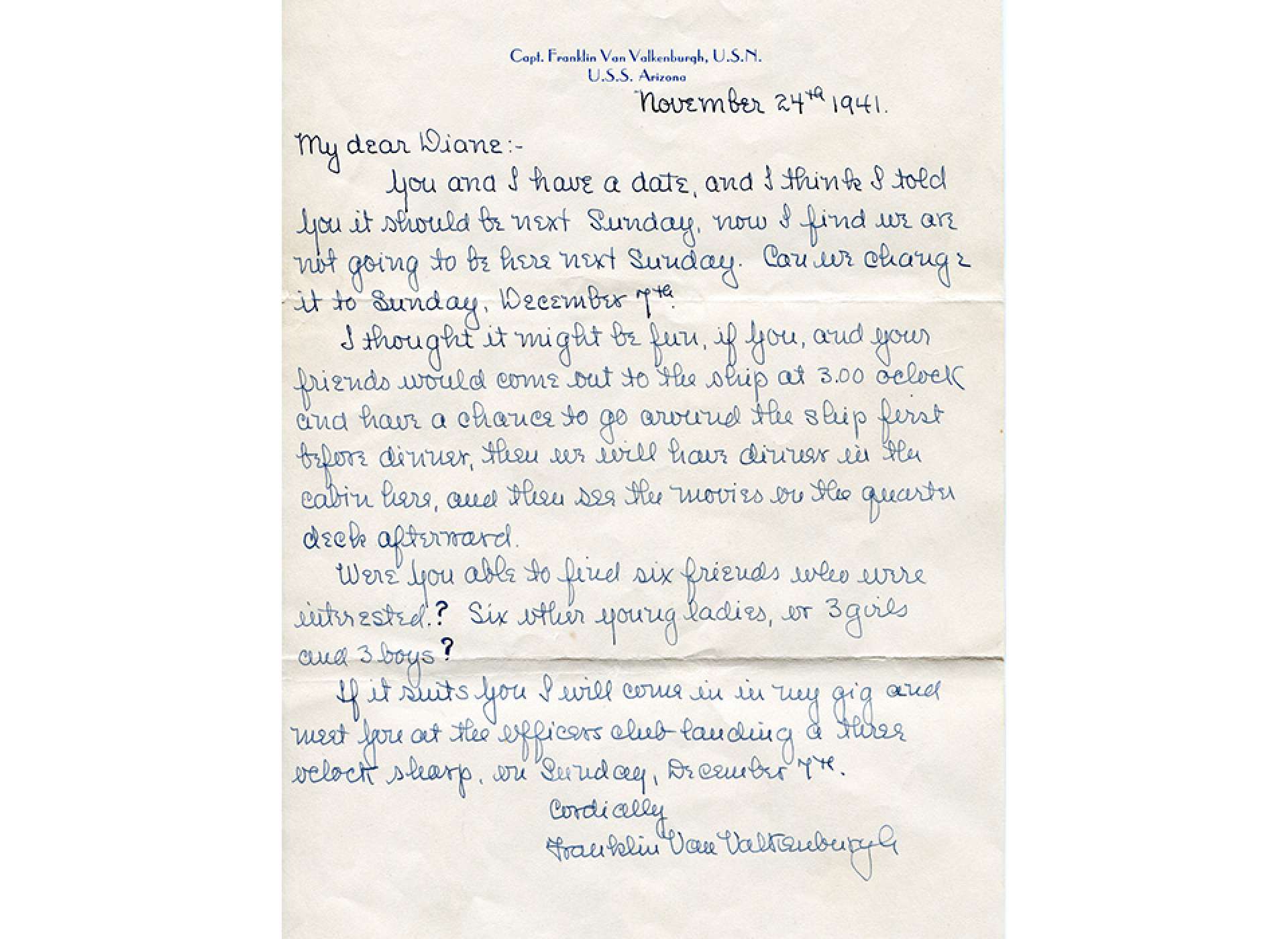
Invitation from CAPT Franklin Van Valkenburgh. Image courtesy of Lydia Grant.
When the Japanese attack began on the morning of December 7, 1941, Lydia was asleep in her second-floor bedroom of the Gillette family bungalow at the Pearl Harbor Navy Yard. Thomas was in the front yard of the next-door neighbor’s house playing with his friend, Monty Higgins, and their mother was in the neighbor’s house having coffee with Mrs. Higgins.
Shortly after 8:00 a.m., Thomas and Monty looked up to see a line of torpedo planes flying over the bungalows. As the boys looked on with excitement at the low flying planes, Thomas’ mother ran outside to see what was happening. Tomas yelled out, “Look, torpedo planes!” and was somewhat taken aback when his mother replied, “Yeah, and they’re not ours now get in the damned house!” His mother never used harsh language like that in front of him so hearing her response, Thomas immediately ran inside the Higgins home and got into the faux-fireplace with Monty since it was the only place in the house that was made of brick and offered some protection.
Moments after Thomas and Monty took refuge inside the Higgins home, Lydia was awakened by Japanese machine gun bullets slamming into the wall next to her bed. The enemy rounds had passed just over her head and would’ve killed her had she been sitting up. Not fully realizing what was going on, she got out of bed and walked out onto the roof outside of her bedroom window where she saw low-flying aircraft passing just over the tops of the palm trees in her front yard. Lydia thought she was witnessing very realistic maneuvers until her mother called from the Higgins’ home next door and told her they were being attacked.
Lydia was told to go in the house and stay there, but instead decided to get the housekeeper and make a run for the Higgins’ home where her mother and brother were. As the two ran across the yard, Japanese machine gun bullets kicked up dirt all around them but fortunately neither was hit. When the family was reunited, they remained at the Higgins home until the attack had ended then they all went up to the home of a family friend in Aiea Heights where they watched the USS Arizona (BB-39) burn through the night.
Lydia, Thomas, and their mother remained at Pearl Harbor until December 24, 1941 when they, and hundreds of other civilians and military dependents, boarded the SS Lurline and steamed back to the US mainland. As fate would have it, Captain Claude Gillette was not at Pearl Harbor at the time of the attack. He had been sent to Maui a day or two before for a last-minute inspection of a naval facility there. He was the only member of the Gillette family not present for the attack. But, while he may have missed the opening round of the fight, Gillette’s contribution to the war effort was enormous.
Following the attack, he managed the initial salvage and repair operations at Pearl Harbor. He also oversaw the yard work performed on the USS Yorktown (CV-5) in May 1942 to prepare her for the Battle of Midway.
In June 1942, Gillette, newly promoted to Rear Admiral, took command of the Puget Sound Naval Shipyard, the largest navy yard on the West Coast of the United States. There, he supervised repairs and upgrades made to warships of all sizes, including five of the battleships that had survived the attack on Pearl Harbor. During the two and a half years he commanded the Puget Sound Naval Shipyard, RADM Gillette put hundreds of damaged warships back into the fight against Japan, a feat his children are no doubt proud of.
Lydia Grant’s oral history interview can be viewed on the Digital Collections of The National WWII Museum website. Thomas Gillette’s oral history will be available later this year.
Joey Balfour
Joey Balfour is the Assistant Director of Oral History at The National WWII Museum and oversees the collection, preservation, of curation of the interviews housed in the Museum’s Oral History Collection.
Cite this article:
MLA Citation:
APA Citation:
Chicago Style Citation:
